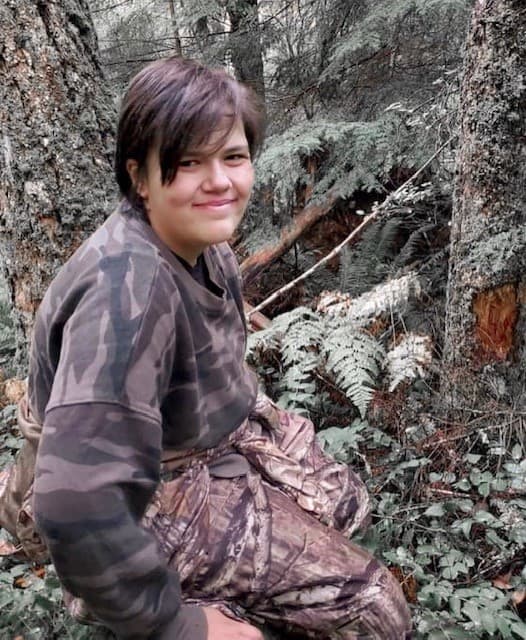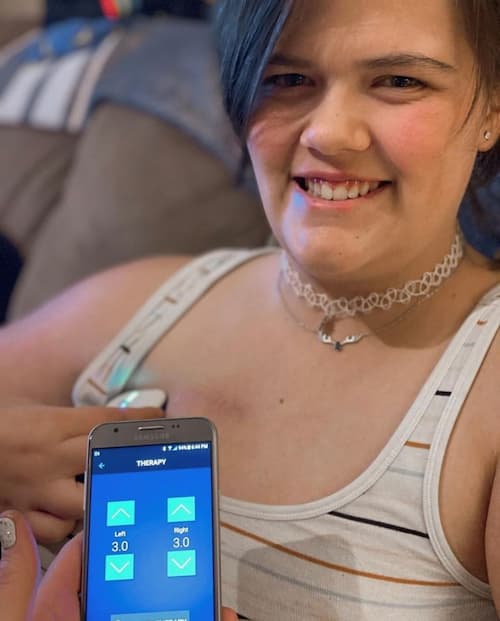A New Neurosurgical Procedure is Bringing Promising Seizure Relief to Some Epilepsy Patients
3.7.2022 | Casey Egan

Epilepsy can be very difficult to treat – and some families explore a range of options seeking relief from seizures for a child with epilepsy looking for a solution. For 14-year-old Taylor Johnson, a procedure known as deep brain stimulation (DBS) resulted in her experiencing a completely new life and the significant seizure relief she and her family have been trying to find.
In deep brain stimulation, a small battery-powered device sends low-level electrical signals through the brain. The device is similar to a pacemaker in that it uses electrical pulses to help regulate brain function. It can be programmed remotely to help regulate brain function and reduce seizures.
During surgery, a neurosurgeon places two thin electrical wires into deep brain tissue. The wires are connected to a small battery that can be controlled remotely to stimulate the area of the brain called the thalamus. The thalamus is the central point for relaying signals to other parts of the brain.
Seattle Children’s is the only provider in the northwestern United States that offers deep brain stimulation for children. The Epilepsy Program at Seattle Children’s is the largest on the West Coast to treat babies, children and teens who have repeated seizures.
The procedure has been offered for around two years at Seattle Children’s.
“It’s been a really good adjunctive treatment for refractory seizures if medicine hasn’t worked,” said Dr. Stephanie Randle, a child neurologist and epileptologist at Seattle Children’s. “We’ve found that for most people, it can certainly reduce their seizure burden by about 50%.”
For Taylor, however, it brought about an even greater reduction in seizure frequency. She received the DBS procedure in the fall of 2020 – and it has drastically changed her day-to-day experience living with epilepsy, says her mom, Jennifer Johnson. Prior to the procedure, Taylor was having upwards of 60 seizures a day, her mom says. Now, she has around four to five.
“It’s been a huge improvement,” said Jennifer. “She has some of her freedoms back. She used to not be able to shower alone. Somebody would always be with her. She used to not be able to sleep alone. At school, she would have to come home a lot, because her seizures were just so bad, wearing her out. She can make it through a whole day of school — she’s not as tired.”
Taylor has even been able to go hunting this year, something she’s wanted to do for a long time, but because her seizures were so bad, her parents did not want her out in the woods out of cell phone service range and medical services.
Jennifer also says that Taylor used to have much longer seizures that could last as long as four minutes. Since the procedure, Taylor has only had one long one, her mom says. Most of her seizures now do not disrupt her whole day.
Prior to the procedure, Jennifer says her family went “through the ringer” with Taylor’s epilepsy, searching for solutions to the constant seizures. They tried a number of different medications, with some that worked initially, but eventually, she says they stopped working.

Taylor also had multiple surgeries prior to the DBS procedure, including two frontal lobe resections, a procedure that separated the two hemispheres of her brain. All three were performed in the hopes of preventing seizures, but they were ultimately unsuccessful in the long term.
“I think knowing everything that she’s been through, to finally have a treatment that’s helped her, is amazing,” said Randle.
Randle says there are three ways to treat seizures: medicine, dietary therapies and surgery. Certain patients, she says, have tried multiple medications and dietary therapy – to no avail – and were not good candidates for other types of epilepsy surgery, such as brain resection surgery.
“A device like this allows us just another option to help better control the patients’ seizures,” said Randle.
Now that Seattle Children’s has been successful in using this device in patients, Randle says the procedure is becoming a much more frequent recommendation for patients with refractory epilepsy. Seattle Children’s hopes to expand the number of kids to whom it can offer this treatment option going forward.
Seattle Children’s will also be starting a neuromodulation clinic this spring that will give patients with the DBS device and their parents access to epileptologists and a DBS company representative, where patients and families can gain a better understanding of how to operate the DBS device.